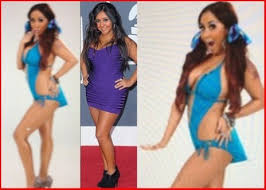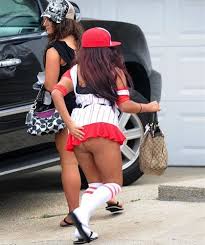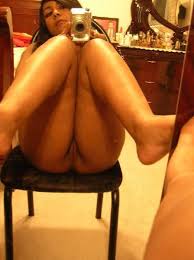 Nude photography is one of the professional photography techniques that can be easily mastered even by beginners. Nude photographs can be tasteful without being too explicit or risqué. Below are some useful nude photography techniques for taking great shots.
Nude photography is one of the professional photography techniques that can be easily mastered even by beginners. Nude photographs can be tasteful without being too explicit or risqué. Below are some useful nude photography techniques for taking great shots. Before you begin, you could benefit from looking at some magazines and photography books for ideas on the best poses. A good pose could have your subject standing with their back to the camera, which makes their back the focus. To accentuate their curves, use side lighting. Nude photography isn't just about having your subject take off their clothes and taking the shot. It is important to first know what exactly you hope to achieve with the shot.
 Try some black and white nude shots. These are great for concealing blemishes on the skin and producing stunning shots. You will notice that black and white shots can completely change the look and feel of your image. This is because they become less about the body in the photo, and more about the light, shadows and shapes in the image. Have your subject stand in front of some black material to produce an effect of them standing in front of a dark background.
Try some black and white nude shots. These are great for concealing blemishes on the skin and producing stunning shots. You will notice that black and white shots can completely change the look and feel of your image. This is because they become less about the body in the photo, and more about the light, shadows and shapes in the image. Have your subject stand in front of some black material to produce an effect of them standing in front of a dark background. Warm up the room in which you will be shooting beforehand. It's difficult for your subject to pose and appear relaxed when they are actually shivering so have the heating on. Provide them with a couple of blankets such that they are able to cover themselves up and keep warm between shots. Take nude photographs in a fun and relaxed setting. Put your subject at ease as it isn't always easy for everyone to undress and pose for a camera. Make them laugh and loosen up as much as possible before you begin.
 Use a longer focal length as images generally come out best when shot with longer focal lengths. Allow your subject some personal space and avoid getting up close and personal. Take some more up close shots of various parts of your subjects body as well.
Use a longer focal length as images generally come out best when shot with longer focal lengths. Allow your subject some personal space and avoid getting up close and personal. Take some more up close shots of various parts of your subjects body as well.
Nude photography is one of the few people photography techniques in which anonymity adds to the appeal of the image. For instance, you may have your subject turn their face away from the camera thereby providing a more photogenic shot. Sometimes having the face in the photo can be a little distracting, and even confronting to the viewer. But when turned away, this can add a little mystery to your photo.
 Most people have the misconception that portrait photography means sitting on a stool in front of a camera. Many associate it with the concept of taking a passport or yearbook photo. While there are still people who think this way, photographers are moving forward by introducing new twists to such a classic and simple concept.
Most people have the misconception that portrait photography means sitting on a stool in front of a camera. Many associate it with the concept of taking a passport or yearbook photo. While there are still people who think this way, photographers are moving forward by introducing new twists to such a classic and simple concept.
A picture is worth a thousand words, and photographers are finding new ways to capture moments through portraiture. A good photograph is priceless. It speaks volumes of who you are as a person when taken beautifully and artistically. It has the power to encapsulate a moment in time and immortalize every subject. Here are illustrations of the two most popular types and ways you can make them more special.
 Individual portraits are perhaps the most common and popular of the bunch. Everyone needs a good photo and this is the best way to do it. Getting one is a great idea especially for momentous life events like graduations or winning a competition.
Individual portraits are perhaps the most common and popular of the bunch. Everyone needs a good photo and this is the best way to do it. Getting one is a great idea especially for momentous life events like graduations or winning a competition. Portrait photography is also the choice of many parents who wish to have mementos of their kids as they grow older. Some even go to the extent of getting them taken every month (for infants and growing toddlers) or once a year. Doing so is a wonderful way of looking back and makes great keepsakes in the future. Such memorabilia are also a good idea for home decor purposes.
Spice up your pictures by bringing along different props. It is a great way of adding life to a photo and showing off who you are at a certain point in your life. Photographers might also suggest you dress up in costume, a common idea for things like high school graduation photos.
 Another concept growing in popularity is nude photography. Consider this alternative especially when you are in your prime years. Taking photos in the buff is not about having the perfect body. Its goal is to expose who you are as a person with no inhibitions. It can also give life to the definition of a portrait being an "artistic representation" of a person.
Another concept growing in popularity is nude photography. Consider this alternative especially when you are in your prime years. Taking photos in the buff is not about having the perfect body. Its goal is to expose who you are as a person with no inhibitions. It can also give life to the definition of a portrait being an "artistic representation" of a person. Nude photography captures your every essence by revealing who you are without all the different layers covering you - the clothes, the makeup, and whatever accessories you use. It is the most genuine expression of who you truly are as a person.
Couples
Portrait photography has the power to capture the special and unique bond between two lovers. It is a common way of celebrating love; and it works not only for romantic couples but for others as well. Couple portraits work whether it is with you and your mom, dad, sibling, child, or anyone you want to be with. Outdoor settings are always a great idea for these photos. It allows you to be more relaxed and carefree - that, and because candid shots sometimes work best for these kinds of pictures.
 Nude photography can also work if you are taking the photo with a romantic partner. It is the best way of proving your devotion for each other and showing how comfortable you are. Shoots inside a studio are the best ways to go about it if you are interested in the concept. It allows you and your partner to be intimate to capture a more sensual and beautiful portrait.
Nude photography can also work if you are taking the photo with a romantic partner. It is the best way of proving your devotion for each other and showing how comfortable you are. Shoots inside a studio are the best ways to go about it if you are interested in the concept. It allows you and your partner to be intimate to capture a more sensual and beautiful portrait.
 Indie film financing and movie distribution reminds of what it would feel like dancing nude on stage (much respect for exotic dancers at Larry Flynt's Hustler Club!). You show up to pitch your movie project and need to be able to dance to a film investor's music. It's their stage and not yours as an indie filmmaker seeking film funding. They want you to make a sellable movie which appeals to movie distributors so the production can make money.
Indie film financing and movie distribution reminds of what it would feel like dancing nude on stage (much respect for exotic dancers at Larry Flynt's Hustler Club!). You show up to pitch your movie project and need to be able to dance to a film investor's music. It's their stage and not yours as an indie filmmaker seeking film funding. They want you to make a sellable movie which appeals to movie distributors so the production can make money. Most investors I've met with are not interested in putting hard money into indie art house films because those are tough sells to movie distributors and overseas film buyers aren't usually interested in seeing them. The dialogue and scenes of certain art house type films don't translate well to foreign buyers and movie viewers. Action, horror and skin does not need subtitles for people to follow the story is what I've been told by distributors. Talking head movies can make no sense to viewers that don't understand subtle lines spoken in a foreign language.
Independent film financing continues to change as indie movie distribution gets more financially shaky. The place it's hitting indie movie producers hardest is right at the source - film financing. Film investors right now aren't feeling excited about putting money into movies that do not have bankable name actors. This is not like so-called indie movies that have A-list actors or are produced for millions of dollars. Those type of indie film passion projects you can make once you've made it in the entertainment business at the studio level.
Indie film investors and movie distributors won't expect you to have an A-list actor, but they do want producers to have actors (B-list or C-list or D-list) with some name recognition or celebrity. The first question film investors and movie distributors ask is who the cast is. This is where most indie movie producers are blown out of the water because they have an unknown cast of actors. Plus there is a glut of indie movies being made because technology has made it more affordable to make movies.
 The bright side is that entertaining indie movies are being made that might not otherwise ever have seen light of day before. The downside is meaningful movie distribution (getting paid) for indie produced films continues to shrink as indie films being made rises (supply and demand 101). I talked to one movie distributor that caters to releasing independent films and they told me they receive new film submissions daily.
The bright side is that entertaining indie movies are being made that might not otherwise ever have seen light of day before. The downside is meaningful movie distribution (getting paid) for indie produced films continues to shrink as indie films being made rises (supply and demand 101). I talked to one movie distributor that caters to releasing independent films and they told me they receive new film submissions daily.
They were honest saying they get very sellable movies and ones that are less than appealing, but with so many movies out there they no longer offer a majority of producers advance money against film royalties or pay a lump cash "buy-out" to secure distribution rights. Their business viewpoint is most indie filmmakers are just happy seeing their movie released. The term they used was "glorified showreel" for an indie filmmaker to display they can make a feature film. So, they acquire many of their movie releases without paying an advance or offering a "buy-out" agreement.
Not making a profit from a movie does not make financial sense for film investors that expect to see money made. When people put up money to produce a movie they want a return on their investment. Otherwise it's no longer a movie investment. It becomes a film donation of money they're giving away with no expectations. I've been on the "dog and pony show" circuit meeting with potential film investors and learning invaluable lessons.
I'm in the habit now of talking to indie movie distributors before writing a screenplay to see what types of films are selling and what actors or celebrity names attached to a potential project appeal to them. This is not like chasing trends, but it gives producers a sharper picture of the sales climate for indie films. Sometimes distributors will give me a short list of actors or celebrities to consider that fit an independent movie budget. Movie sales outside of the U.S. are where a bulk of the money is made for indie filmmakers.
Movie distributors and film sales agents can tell you what actors and celebrity talent is translating to movie sales overseas at the indie level. These won't be A-list names, but having someone with some kind of name is a great selling point to help your movie standout from others. Brief cameos of known actors or celebrities used to be a good way to keep talent cost down and add a bankable name to your cast.
That has changed lately from my conversations with distribution companies. Movie distributors now expect any name talent attached to have a meaningful part in the movie instead of a few minutes in a cameo role. Cameo scenes can still work if there is a visual hook that grabs the attention of viewers in some way. But having name talent say a couple of lines with no special hook won't fly anymore.
Another way to make an indie film in need of funding more attractive to investors is to attach talent that has been in a movie or TV show of note. Their name as an actor might not be that well-known yet, but rising stars that have appeared in a popular movie or TV show can give your movie broader appeal. If you cast them in a supporting role keep working days on the set down to a minimum to save your budget. Try to write their scenes so they can be shot in one or two days.
When you're pitching to serious film investors they will want to be given a detailed movie budget and distribution plan on how you plan on making money from the film's release. The Catch-22 that happens a lot is that most movie distributors that cater to releasing indie films won't commit to any deal until they've screened the movie.
There is not built-in distribution like with studio budget films. Film investors that are not traditionally part of the entertainment business can get turned off when a producer does not have a distribution deal already in place. They don't understand the Catch-22 of indie filmmaking and distribution. This is where a movie producer really needs to have a solid pitch that explains the financial dynamics of indie film distribution.
Most film investors will pass on an indie movie producer's financing pitch that mentions self-distribution in it. From a movie investor's business perspective it takes entirely too long for an indie movie to generate money going the self-distribution route. It's like the old school way of selling your movie out of the trunk of your car at places, but now it's done online using digital distribution and direct sales via a blog. That's a long grind that most investors will not be interested in waiting around for. Moving one unit of a movie at a time is too slow of trickle for investors.
A possible way around the Catch-22 is to reach out to movie distributors while you are pitching to film investors. With a firm budget number and possible cast attached you can gauge to see if there is any meaningful distribution interest in the movie. It's always possible a distributor will tell you that they would offer an advance or "buy-out" deal. They usually won't give you a hard number, but even a ballpark figure of what they might offer can let you know if your budget makes financial sense to approach movie investors with.
I know one savvy indie movie producer that makes 4-6 movies a year on very reasonable budgets and knows they're already making a profit from the advance money alone. The film royalty payments are a bonus. The producer keeps budgets extremely affordable and streamlined at every phase of production. Once you have a track record with a distribution company you know what you can expect to be paid. Then you can offer film investors a percent on their money invested into the production that makes sense.



No comments:
Post a Comment